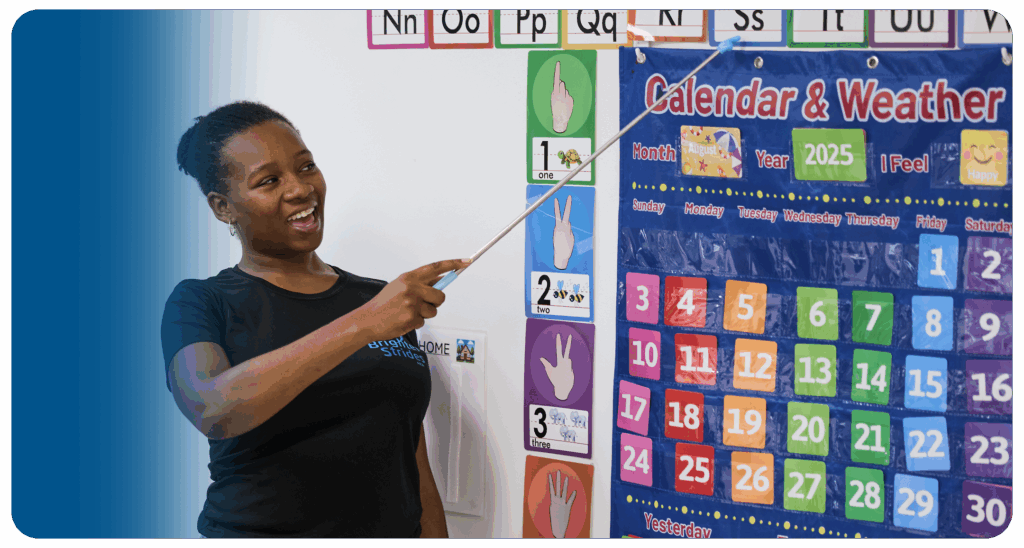Understanding Intraverbal Behavior
Intraverbal behavior plays a crucial role in communication, particularly for individuals with autism. It involves responding to others’ statements or questions without any visual cue, allowing for meaningful back-and-forth exchanges. Developing intraverbal skills is essential for engaging in conversations and social interactions [1].
Definition and Importance
Intraverbal behavior refers to the ability to respond linguistically based on other people’s language. It involves understanding spoken language and providing relevant and meaningful responses without any visual cues or prompts.
For example, when someone asks the question, “What’s your favorite color?” and the individual responds with “Blue,” this is considered an intraverbal response.
The importance of intraverbal behavior lies in its ability to expand communicative repertoires. By developing intraverbal skills, individuals can engage in meaningful conversations, express their thoughts and preferences, and understand and respond appropriately to others. It allows for more natural and effective communication, enhancing social interactions and overall quality of life.
For individuals with autism, intraverbal skills can be particularly challenging to develop. The ability to understand and respond to verbal cues without any visual support requires practice and patience. However, mastering intraverbal behavior can significantly improve their communication skills and promote greater independence and social integration.
Role in Communication
Intraverbal behavior plays a vital role in various aspects of communication. It enables individuals to respond appropriately to questions, engage in conversations, and express their thoughts, opinions, and feelings. By understanding and utilizing intraverbal skills, individuals can participate more actively in social interactions, academic settings, and everyday conversations.
The development of intraverbal behavior involves listening and comprehending verbal cues from others and formulating relevant and meaningful responses. It allows individuals to go beyond simple one-word answers and engage in more complex exchanges. Intraverbal behavior is an essential component of effective communication and problem-solving, enabling individuals to navigate various social situations.
Parents and caregivers play a crucial role in supporting the development of intraverbal skills in individuals with autism. By providing opportunities for practice, using appropriate prompts and reinforcement, and creating a supportive and inclusive environment, they can help individuals strengthen their intraverbal behavior and enhance their overall communication abilities.
Understanding and fostering intraverbal behavior is essential for unlocking the communication potential of individuals with autism. By recognizing and valuing the diverse communication abilities within our society, we can create a more inclusive and supportive environment for everyone [2].
Teaching Intraverbal Skills
When it comes to teaching intraverbal skills, there are specific strategies and techniques that can be employed to help individuals with autism develop their verbal communication abilities. Additionally, error correction procedures play a crucial role in reinforcing accurate intraverbal responses and addressing any errors that may occur during the learning process.
Strategies and Techniques
Teaching intraverbal skills requires careful planning and implementation of effective strategies and techniques. Here are some approaches that have proven to be successful:
- Prompting: Prompting techniques, such as graduated guidance and least-to-most prompting, can be used to assist individuals in providing the correct intraverbal response. Prompting should gradually fade as the learner demonstrates increased independence and accuracy.
- Reinforcement: Positive reinforcement is a powerful tool for promoting intraverbal behavior. Providing immediate and meaningful reinforcement, such as praise, tokens, or preferred items, can help reinforce correct responses and motivate learners to engage in intraverbal exchanges.
- Task Analysis: Breaking down complex intraverbal skills into smaller, more manageable steps can facilitate the learning process. By systematically teaching each component of the skill, individuals can gradually build their intraverbal repertoire.
- Generalization: It is important to promote generalization of intraverbal skills across different settings, people, and stimuli. This can be achieved by practicing intraverbal responses in various contexts and incorporating real-life situations.
Read about: ABA Strategies for Autism
Error Correction Procedures
During the teaching process, errors may occur when individuals are learning intraverbal skills. Implementing effective error correction procedures is essential for addressing these errors and reinforcing accurate responses. Here are some commonly used error correction procedures:
- Repeating the Discriminative Stimulus (SD): Generally, repeating the SD is not desired when working on fill-in statements in intraverbal training, unless it is part of a vocal imitation program. However, if a learner consistently responds incorrectly, the teacher may restate the SD to provide additional support and reinforce the correct response [4].
- Modeling Correct Responses: When errors occur, the teacher can model the correct intraverbal response for the learner. This allows the learner to hear and observe the correct response, providing a clear example to follow.
- Prompting and Cueing: Prompting and cueing techniques can be used to guide individuals toward the correct response. This may involve providing verbal or visual prompts to prompt the learner to provide the correct intraverbal response.
- Errorless Teaching: Errorless teaching methods involve gradually increasing support and minimizing the occurrence of errors. By structuring the learning environment in a way that minimizes errors, individuals can experience success and build confidence in their intraverbal skills.
Implementing these strategies and error correction procedures can greatly enhance the teaching and learning of intraverbal skills for individuals with autism. It is important to tailor these approaches to meet the specific needs and abilities of each individual, ensuring that instruction is individualized and effective. With patience, practice, and the right support, individuals with autism can unlock the power of intraverbal behavior and enhance their communication abilities.
Read about: ABA Reinforcement Methods
Intraverbal Training for Children
When it comes to developing intraverbal skills in children with autism, understanding the progression of development and addressing the challenges that may arise is crucial. Intraverbal behavior, which involves responding to others’ statements or questions without any visual cue, plays a vital role in facilitating conversations and social interactions [1].
Development and Progression
The development of intraverbal skills in children with autism is typically a gradual process. It starts with teaching basic verbal operants, such as labeling objects and answering simple questions. As the child progresses, they learn to respond to more complex questions and engage in meaningful conversations.
Intraverbal training often begins with teaching simple intraverbals, such as filling in missing words in familiar phrases or completing common idioms. From there, the child can gradually expand their repertoire to include more advanced intraverbal skills, such as answering open-ended questions and expressing personal opinions.
It’s important to note that the pace of development may vary for each child, and individualized instruction is key to effectively promoting intraverbal skills. A skilled therapist or educator can assess the child’s current abilities and tailor the training program accordingly, ensuring optimal progress.
Challenges and Solutions
Children with autism may face specific challenges when it comes to acquiring and mastering intraverbal skills. Some common challenges include difficulty generalizing skills across different settings and individuals, limited vocabulary, and struggles with initiating and maintaining conversations.
To address these challenges, a systematic approach is necessary. Strategies like providing ample practice opportunities in various contexts, incorporating visual supports, and gradually fading prompts can help promote generalization of intraverbal skills. Visual prompts, such as written text, have been found to be effective in teaching intraverbal behavior to children with autism. These prompts can be particularly useful for children who benefit from visual learning strategies.
Additionally, incorporating social skills training and teaching conversational rules can help children with autism improve their ability to initiate and maintain conversations. Role-playing and practice sessions can provide opportunities for them to apply their intraverbal skills in realistic social situations.
It’s important to remember that each child is unique, and the challenges they face may vary. A comprehensive and individualized approach, implemented by professionals trained in evidence-based practices like Applied Behavior Analysis (ABA), can effectively address these challenges and support the development of intraverbal skills.
By understanding the developmental progression of intraverbal skills and implementing targeted strategies to overcome challenges, educators, therapists, and parents can help children with autism unlock the power of intraverbals and enhance their communication abilities. This not only promotes social interactions but also expands their overall communicative repertoires, enabling them to engage in meaningful conversations and connect with others more effectively.
Promoting Intraverbal Skills
To enhance intraverbal skills in individuals with autism, it is important to explore different prompting methods. Two commonly used approaches are visual prompts and echoic prompts. Let’s take a closer look at these methods and their effectiveness in promoting intraverbal skills.
Visual vs. Echoic Prompts
Research conducted by Joseph Vedora, Laura Meunier, and Harry Mackay suggests that visual (textual) prompts are more effective than echoic prompts in teaching intraverbal responses to children with autism. In their study, they compared the effects of using visual (textual) and echoic prompts on the acquisition of intraverbal responses by two children with autism. The results indicated that textual prompts were more successful in promoting intraverbal skills.
Visual prompts, such as written words or pictures, provide a visual stimulus that prompts the individual to respond. They offer a clear and concrete representation of the desired response, making it easier for individuals with autism to understand and imitate. Visual prompts can be particularly helpful in teaching intraverbal skills, expanding conversational abilities, and improving performance on academic assessments.
On the other hand, echoic prompts involve auditory cues that prompt the individual to repeat or imitate a given verbal response. While echoic prompts can be useful in certain situations, studies suggest that they may be less effective than visual prompts for teaching intraverbal behavior to individuals with autism. However, it’s important to note that individual responses may vary, and a combination of different prompting methods may be necessary for optimal results.
Effective Prompting Methods
When employing visual prompts, it is essential to consider the specific needs and preferences of each individual. Some effective techniques for using visual prompts include:
- Written Words: Providing written words or phrases that prompt the desired intraverbal response.
- Picture Cards: Using visual cards or images that represent the target response, allowing individuals to associate the visual cue with the appropriate verbal response.
- Visual Schedules: Creating visual schedules or charts that outline the sequence of intraverbal responses in a given situation or conversation.
It’s important to keep in mind that visuals should be clear, unambiguous, and tailored to the individual’s comprehension level. Additionally, gradually fading the visual prompts over time can help individuals develop independent intraverbal skills.
While visual prompts have been found to be more effective, it’s important to remember that each individual is unique. Some individuals may respond better to echoic prompts or a combination of both visual and echoic prompts. Understanding the individual’s preferences and needs is crucial in determining the most effective prompting method.
By utilizing visual prompts and understanding their benefits, educators, therapists, and parents can promote and expand intraverbal skills in individuals with autism. These effective prompting methods can play a significant role in fostering communication, facilitating social interactions, and empowering individuals with autism to express themselves fluently and confidently.
Enhancing Communicative Repertoires
When it comes to individuals with autism, enhancing their communicative repertoires is of utmost importance. This includes developing their intraverbal skills, which play a significant role in their ability to engage in meaningful conversations and respond appropriately in various social situations. Let’s explore the practical implications and application of intraverbal skills in different programs.
Practical Implications
The findings of a study suggest that textual prompts can be effectively used to expand intraverbal repertoires and improve conversational skills in individuals with autism. These prompts can be applied in various programs, including educational settings, therapy sessions, and social skills training programs. By incorporating textual prompts, individuals with autism can be guided to generate appropriate verbal responses, enabling them to actively participate and engage in conversations [5].
Visual prompts, such as written cues or word cards, have shown positive outcomes in teaching intraverbal behavior to individuals with autism. These prompts provide a visual representation of the desired response, aiding in comprehension and recall. Visual prompts have been found to be particularly effective in improving performance on academic assessments and expanding intraverbal repertoires [5].
By incorporating these practical implications into various programs, individuals with autism can enhance their intraverbal skills, leading to improved communication and social interactions.
Application in Different Programs
The application of intraverbal skills can be observed in a variety of programs aimed at supporting individuals with autism. Some examples include:
- Educational Programs: Within the educational setting, teachers and therapists can implement strategies that focus on teaching and reinforcing intraverbal behavior. This may involve incorporating visual prompts, utilizing structured teaching techniques, and providing ample opportunities for practice and generalization.
- Therapy Sessions: In therapy sessions, such as Applied Behavior Analysis (ABA) therapy, intraverbal skills are targeted to improve language and communication abilities. Therapists work closely with individuals with autism to teach them how to respond appropriately to questions, engage in reciprocal conversations, and demonstrate flexible language use. Strategies, such as error correction procedures, are employed to address any errors and reinforce accurate intraverbal responses.
- Social Skills Training Programs: Social skills training programs aim to enhance social interactions and communication skills in individuals with autism. These programs often incorporate activities and exercises that require individuals to engage in intraverbal behavior, such as answering questions, initiating conversations, and expressing their thoughts and feelings. By practicing these skills in a supportive and structured environment, individuals with autism can develop their intraverbal repertoires and apply them in real-life social situations.
By implementing intraverbal training and focusing on enhancing communicative repertoires in these programs, individuals with autism can make significant strides in their ability to communicate effectively and engage meaningfully with others. These efforts contribute to improved social interactions and overall quality of life for individuals on the autism spectrum.
Complex Intraverbal Behaviors
Within the realm of intraverbal behavior, there exist various levels of complexity. Two notable categories are conditional discriminations and verbal conditional discriminations (VCDs). These complex intraverbal behaviors involve the integration of multiple stimuli and concepts.
Conditional Discriminations
Intraverbal responses can involve conditional discriminations, where both the conditional stimulus and the discriminative stimulus contain compound stimuli. Conditional discriminations require individuals to respond based on the relationship between the stimuli presented. For example, a question like “What do you wear when it’s cold outside?” requires the understanding of the conditional relationship between the weather condition (cold outside) and the appropriate response (clothing suitable for cold weather).
The development of conditional discriminations in intraverbal behavior is an important milestone in communication for individuals with autism or other developmental disabilities. It allows for more flexible and context-specific responses, enabling individuals to engage in meaningful conversations and navigate real-world scenarios.
Verbal Conditional Discriminations (VCDs)
Verbal conditional discriminations (VCDs) represent a higher level of complexity in intraverbal behavior. Antecedent verbal control of intraverbal behavior can involve discriminated stimuli, conditional stimulus control, and/or control by compound stimuli [6].
VCDs encompass a range of linguistic elements that require individuals to understand and respond to complex verbal stimuli. This includes the use of WH-question formats, such as “Why,” “What if,” or “How,” which necessitate understanding and responding to hypothetical or conditional scenarios [7]. VCDs also involve the inclusion of more complex parts of speech, such as prepositions, adjectives, adverbs, and conjunctions. Furthermore, they encompass more intricate concepts like negation, relative adjectives, time, and ordinal positions.
Appreciating the complexity of VCDs is crucial in the development of effective teaching strategies for individuals with autism or other developmental disabilities. By sequencing intraverbal tasks and designing Individual Educational Programs (IEPs) based on the acquisition of intraverbal behavior by typically developing children, educators and therapists can support the progression of complex intraverbal skills.
Understanding and teaching complex intraverbal behaviors, including conditional discriminations and VCDs, can significantly enhance the communicative repertoires of individuals with autism. By focusing on the development of these skills, educators, therapists, and caregivers can promote more sophisticated and contextually appropriate verbal interactions, fostering greater independence and social integration for individuals on the autism spectrum.




